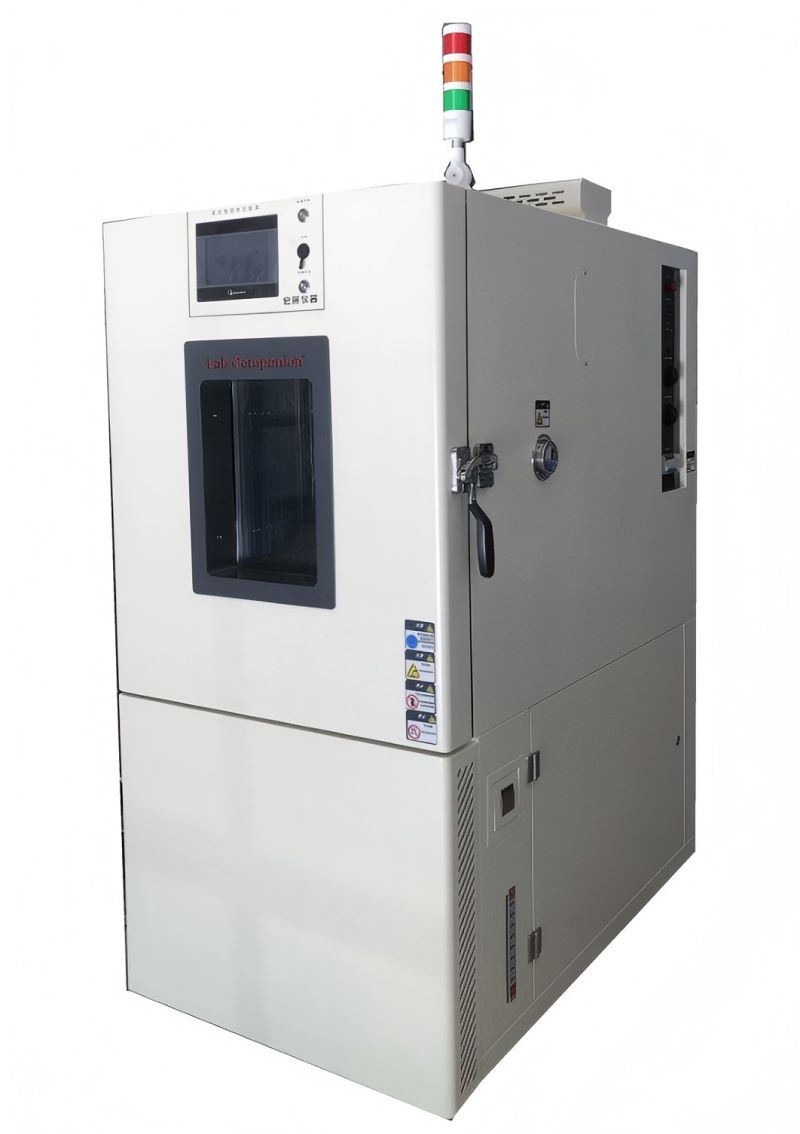High and Low Temperature Test Chamber Requirements Specified in the Standard
The test chamber requirements formulated according to relevant standards should meet the following two points:
1. The temperature and humidity in the high and low temperature test chamber are monitored by the sensor installed in the working space. For the test of the heat dissipation test sample, the installation position of the sensor is formulated in the GB/T2421-1999 standard.
2, The temperature and relative humidity of the working space are required to be constant within the nominal value and its specified tolerance range, and the influence of the test sample should also be considered during the test.
Heat dissipation test sample test:
The volume of the high and low temperature test chamber should be at least 5 times the total volume of the test sample, the distance between the test sample and the internal wall of the test chamber should be selected according to the provisions of GB/T2423.2-2001 Appendix A (standard appendix), the wind speed in the chamber should not exceed 1M/S, and the structure of the mounting frame or support frame of the test chamber sample should simulate the real conditions in use as much as possible. Or otherwise, the effect of the sample mounting rack on the exchange of heat and moisture between the test sample and the surrounding space should be reduced to a minimum, and the relevant specifications may also specify dedicated mounting racks.
Test severity level:
The severity grade of the test chamber consists of the test temperature, relative humidity and test time, and is specified by the relevant specifications. The combination of temperature and relative humidity can be selected from the following values:
a, 30℃±2℃ 93%±3%
b, 30℃±2℃ 85%±3%
c, 40℃±2℃ 93%±3%
d, 40℃±2℃ 85%±3%
During the test, the test chamber shall be at the temperature and humidity of the laboratory, and the test sample at the ambient temperature of the laboratory shall be placed in the normal position or other specified position in the laboratory in an unpacked, unenergized, "ready for use" state, under certain circumstances (e.g. The relevant specifications may allow the test sample to be directly sent into the test chamber under the treated test conditions, but the test sample must be prevented from producing condensation, the temperature in the test chamber should be adjusted to a predetermined severity level, the time should ensure that the test sample reaches temperature stability, the test time should be calculated from the specified conditions, if the relevant specifications require, the test sample can be energized or worked in the conditional test phase, and the relevant specifications should specify the working conditions and working time or cycle of the test sample during the test. At the end of the conditional test, the test sample should still be left in the test chamber and the chamber should be adjusted to the standard atmospheric conditions of the test. The relative humidity should be reduced first, and the time should not exceed 2 hours. The temperature change rate in the test chamber should not exceed 1℃/min on average within 5min, and the relative humidity during temperature regulation should not exceed 75%. After the conditional test, the test sample should enter the recovery procedure.
